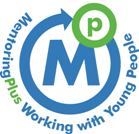 Catalyst IFG started offering single invoice factoring 2010. This kind of finance benefits all kinds of business but especially those with lumpy or unpredictable cash flow. It’s a really useful tool for supporting cash flow – exceptionally quick to arrange and unlike normal factoring or discounting requires no long term commitment.
Catalyst IFG started offering single invoice factoring 2010. This kind of finance benefits all kinds of business but especially those with lumpy or unpredictable cash flow. It’s a really useful tool for supporting cash flow – exceptionally quick to arrange and unlike normal factoring or discounting requires no long term commitment.
When we started promoting this funding option it was an almost instant success. The finance community – including banks and other factoring companies – were very supportive. This is something completely different to what they offer and is no threat to their business. Basically we fill a need which has historically been ignored.
In its first year Catalyst IFG factored close on £1m of invoices and provided almost £750k of vital working capital finance. Since the start of 2012, the rate of growth has accelerated sharply.
Awareness of this option is growing and business owners and managers are increasingly scared of the traditional funding options. Apart from the fear that requests for credit will be turned down anyway (computer-says-no syndrome!) the amount of time and bureaucracy needed to reach that conclusion is a real problem. And there are too many horror stories of facilities being withdrawn for no obvious reason and with little or no notice.
At Catalyst we do all our own underwriting so a decision can always be made on the spot. As a result we can complete deals incredibly quickly. I have done two deals already this year which have gone from first phone call to money-in-the-bank in less than 24 hours. It is unusual for a transaction to take more than a week to complete.
Single invoice factoring has been a lifesaver for many of Catalyst IFG’s clients.
One of our clients is a £2m business in the construction sector with a good trading history but no bank facilities. We took this client on last August and since then the business has almost doubled in size. The owner has been able to accept contracts which he would previously have turned down for lack of working capital. When I visited the owner in January he was extremely grateful for our support – “to be honest, Jeremy” he said to me “if it hadn’t been for you, our business would have been toast last year!”
Instead they are looking at a record year in 2012 and improved profitability.
Catalyst IFG has clients in a wide variety of sectors – construction, recruitment, transport, public service, IT to name but a few.
I feel really proud that we have been able to help so many businesses to survive and prosper. At the moment there are very few options out there and the traditional funding sources are routinely letting people down. In many cases, businesses feel abandoned so it is a real privilege to be able to help turn things around.
To discuss how Catalyst IFG might be able to meet your working capital needs please contact me: Jeremy Lawrence on 0845 528 0788.



